With all the travelling we've been doing in recent topics, it's probably time we stop for a bite to eat. ラーメン has to be one of Japan's most successful food imports - originally from China, it's now almost as much of a national staple as its native cousins うどん (udon) and そば (soba). In its most basic form, ラーメン is a bowl of noodles in soup, but that makes it sound more boring than it is. There are hundreds of variations from instant to gourmet and with that level of diversity, Japan is bound to have the perfect ラーメン for you.
ラーメン is immediately recognisable by the huge bowl it's served in; it also comes with a large spoon or ladle for the soup. Beyond that, the only thing common between every bowl of ラーメン is the noodles - they're about the thickness of egg noodles and cooked al dente. The soup, the toppings and the side dishes, however depend on what you order and the particular shop. In fact, your whole ラーメン experience depends on the particular shop - at some cheaper places you may find yourself sharing a table, sitting on a stool at the bar or perched outside. Several shops don't even have seats - people stand at the counter and slurp away. Personally, I don't think this is a very good way to do it, unless you have no knees.
The best way to enjoy ラーメン is to go to a specialty shop; the menus in these places make being fussy worth it. ラーメン is like the hamburger or steak sandwich of Japan in some respects - everyone serves them, but few do a really good job. If you're lucky, you'll be able to see them being made - the chef picking up a handful of noodles, blanching them in boiling water then adding them to your choice of soup. The most common soups are 豚骨 (とんこつ - tonkotsu - pork bone) 塩 (しお - shio - salt), 醤油 (しょうゆ - shouyu - soy sauce) and 味噌 (みそ - miso). Regardless of which you choose, it will have a stocky and salty flavour to complement the relatively plain noodles. Simple bowls of ラーメン will only be garnished with thinly sliced pork, ねぎ (negi - spring onions) and もやし (moyashi - bean sprouts), but things escalate from there!
This is a bowl of 豚骨ラーメン - a very rich soup with a meaty, buttery taste. In addition to the ねぎ, we now have キムチ (kimuchi - spicy Korean pickles), チャーシュー (chaashuu - char siu pork), のり (nori - seaweed) and an extremely delicious 半熟卵 (はんじゅくたまご - hanjukutamago - soft-boiled egg). Should that not be enough flavour for you, most shops will have にんにく (ninniku - garlic), ごま (goma - sesame seeds) and spices at the table for a fully customisable experience. Don't be ashamed to slurp the soup and noodles as loud as you like - it's not considered rude and people will probably look at you strangely if you don't! If you're really hungry, you could ask for what's called "大盛り" (おおもり - oomori - large serving) which will give you extra noodles, or order something on the side.
The ideal accompaniment to your ラーメン would have to be what's known as 餃子 (ぎょうざ - gyouza) - fried pork mince dumplings. These are another Chinese invention that has been given a Japanese flavour; in this case it's garlic, ginger and spring onion. 餃子 are fried on one side to give them a crunchy texture, then a bit of water is added and they're covered with a lid to steam the top. They're served up piping hot with chilli oil and vinegary dipping sauce and go together with ラーメン like bread and butter. The best part is how cheap they are - if you have a look at the menu above, you can see a serve only costs 180 yen.
Probably the best place to seek out a good bowl of ラーメン is the source - the busy streets of somewhere like 南京町 (なんきんまち nankinmachi), the Chinatown of Kobe, where dozens of noodle shops line the alleys. Failing that, you won't be able to go too far on any city street without seeing somewhere. You don't even need the excuse of a proper mealtime to seek out a ラーメン place any more - its popularity as a quick meal at all hours has seen 24-hour restaurants spring up everywhere. It's not uncommon to see bleary eyed サラリーマン (sarariiman - office workers) and university students stumbling into one long past dinner time for a late night snack. Even if you can't find a restaurant, all is not lost - you can still head into a コンビニ (konbini - convenience store) for a big selection of カップラーメン (kappu ramen - cup ramen) to take home. These continue to evolve in ever more impressive ways; expect to see カレー (karee - curry) flavoured ラーメン and instant noodles with potatoes, meat, seafood and even cheese. You may see some even stranger mutations in your travels.
Such as tomato ラーメン... with olives.
All things considered, It's hard to think of a more versatile Japanese food than ラーメン - it can be a huge meal or a light snack, no-nonsense or with all the trimmings, first thing in the morning or last thing at night. Make sure to try out at least one of the options if you do visit; after seeing Japan's take on it, the humble bowl of noodle soup will never seem the same again.
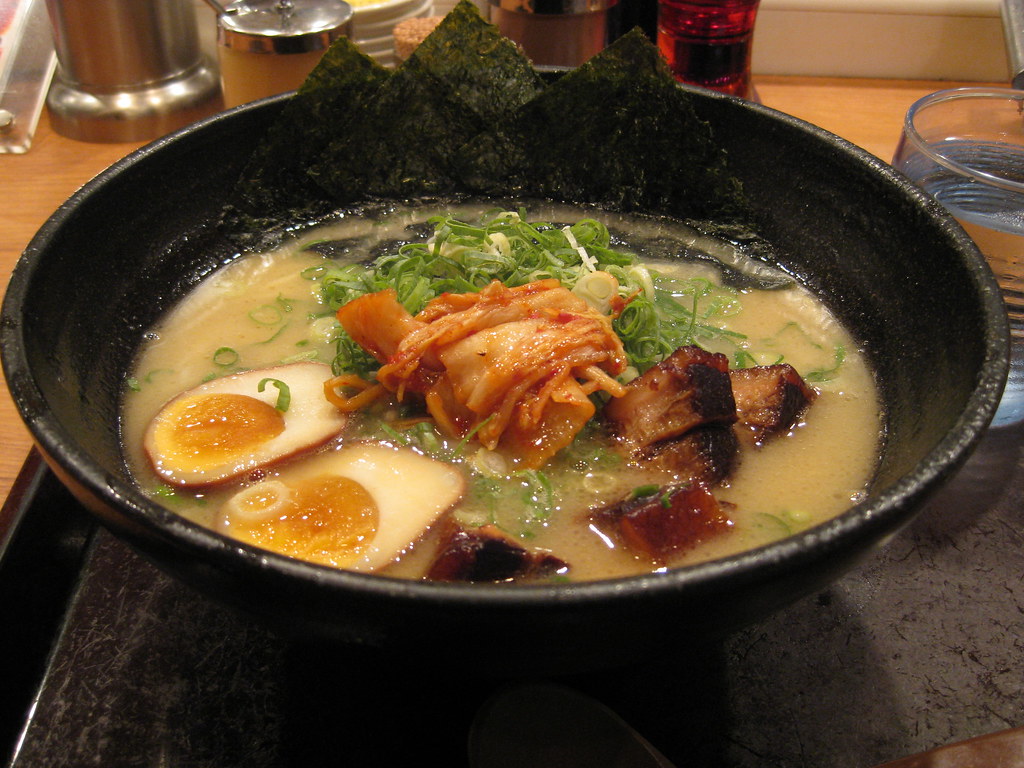
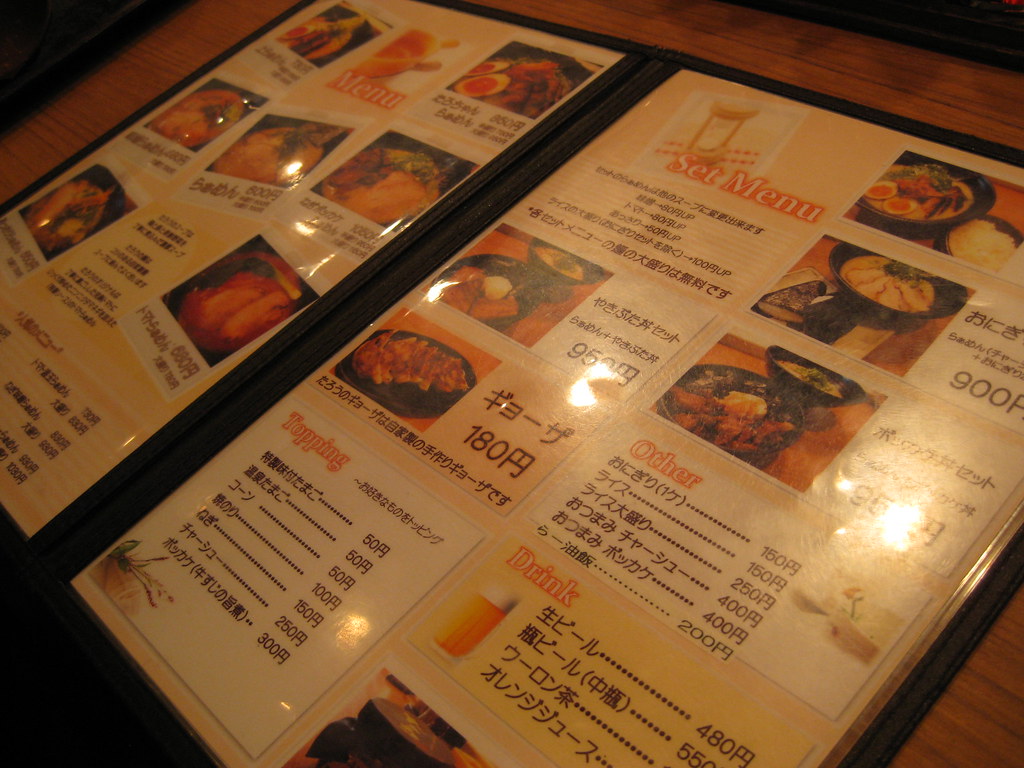
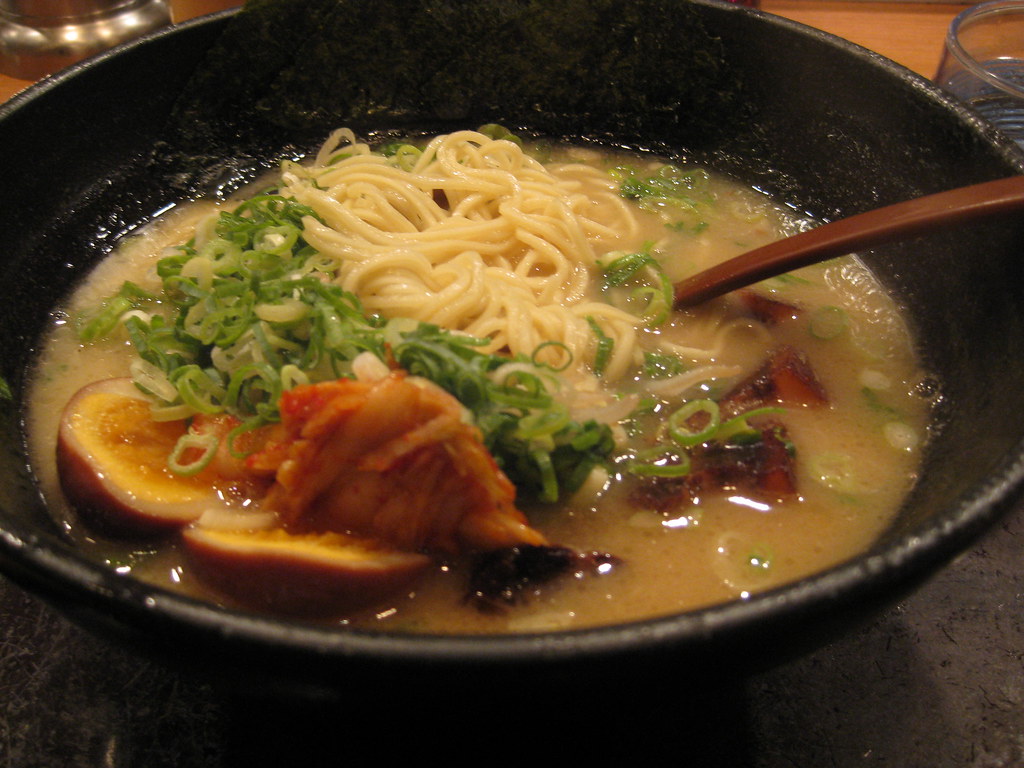
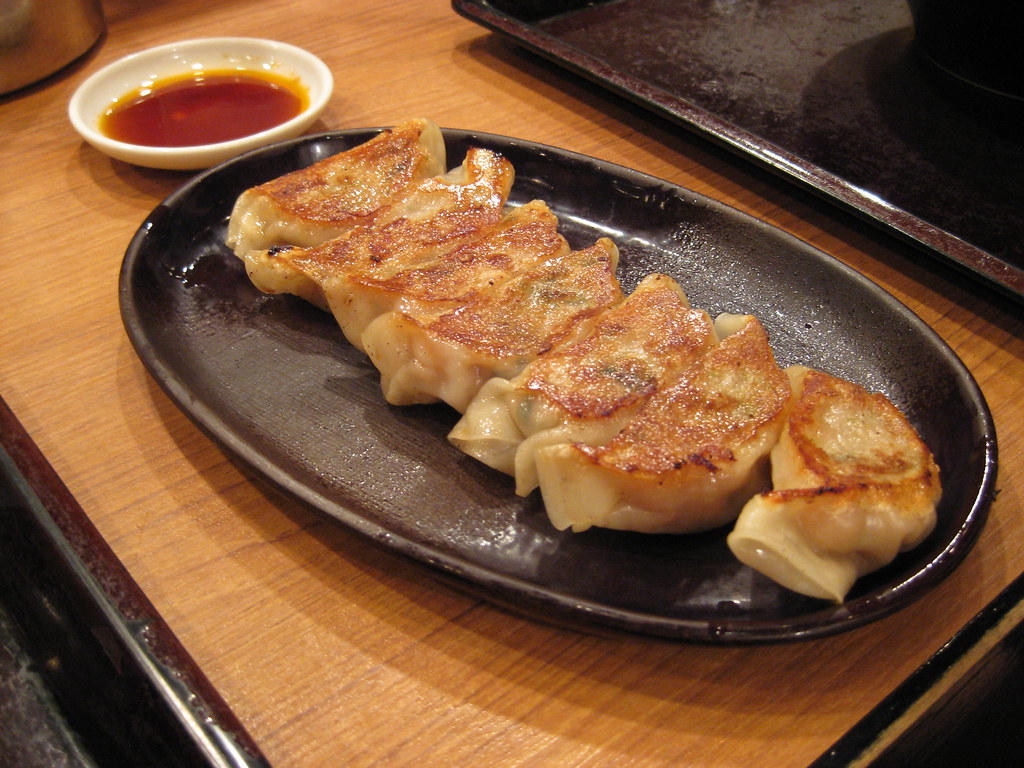
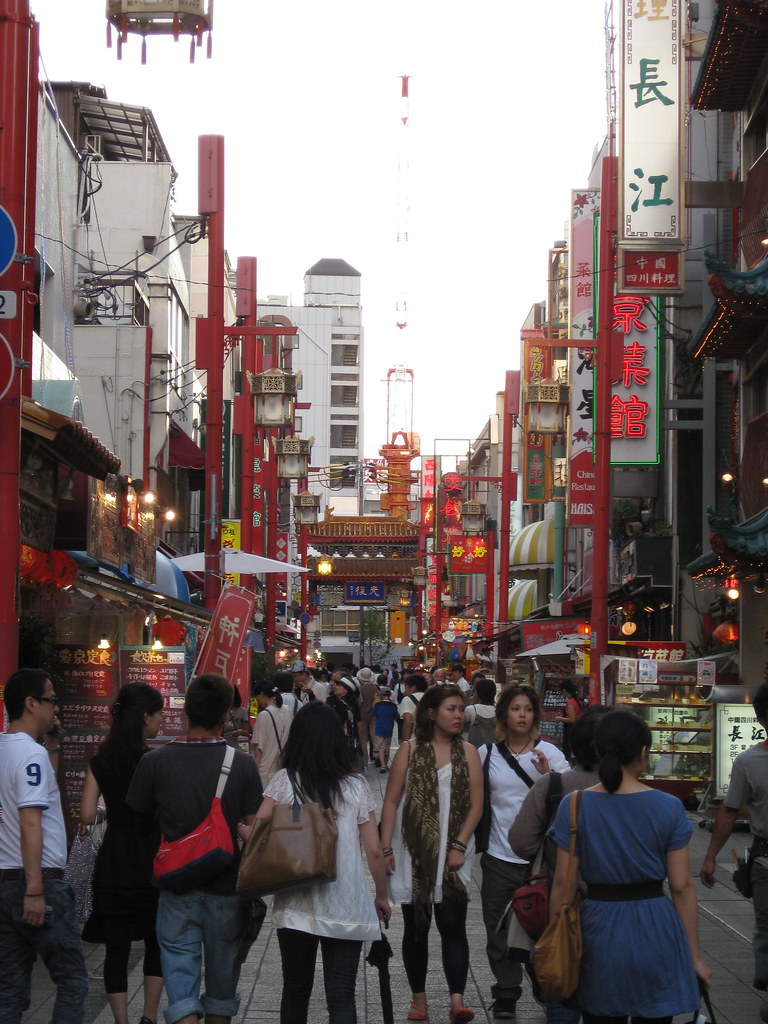
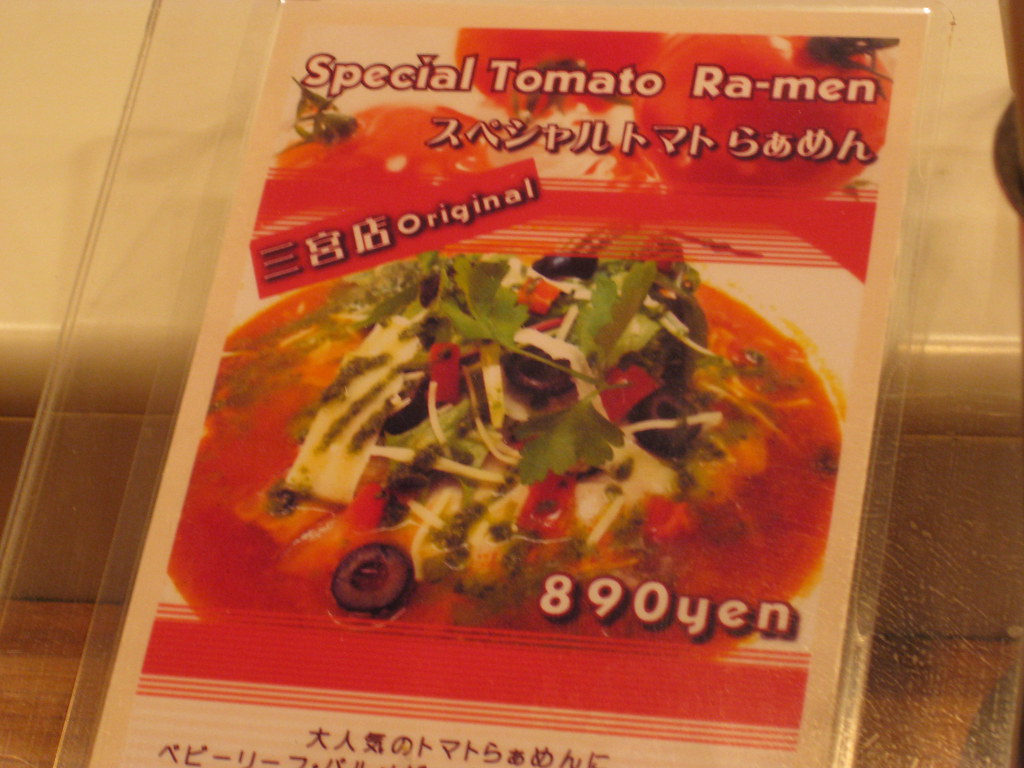
No comments:
Post a Comment
If you have any questions or additions, I would love to hear from you. I may not know the answer, but I'll do my best to find out in any case! You can post anonymously if you like, but abusive/unintelligible/inappropriate comments will not be published.